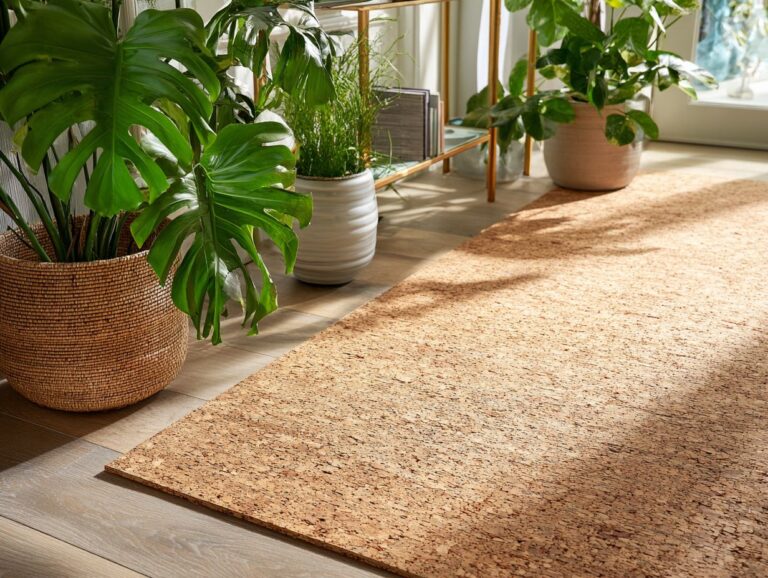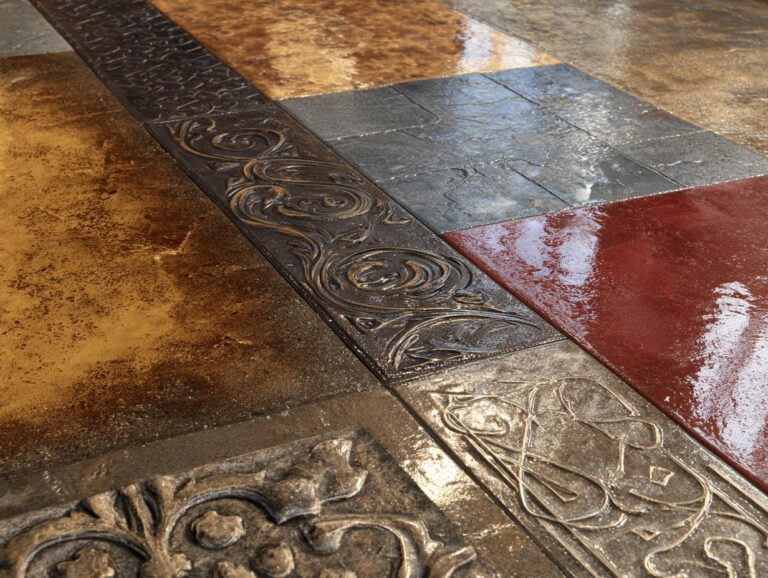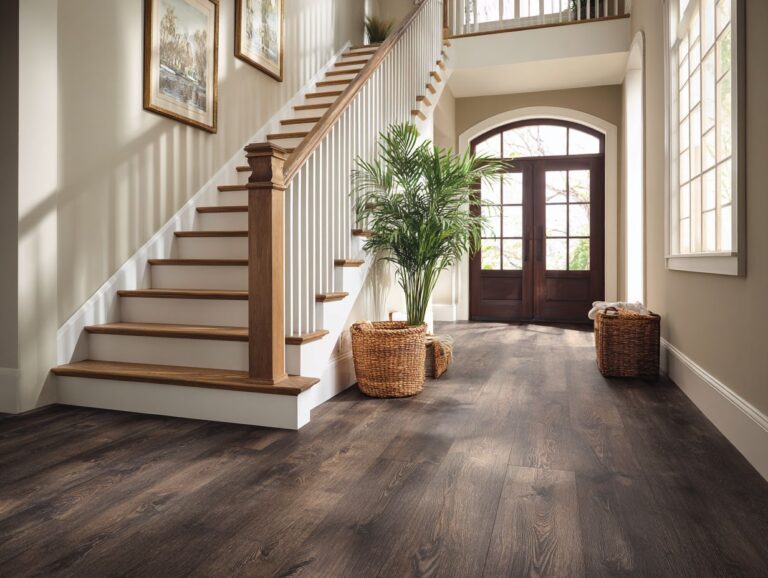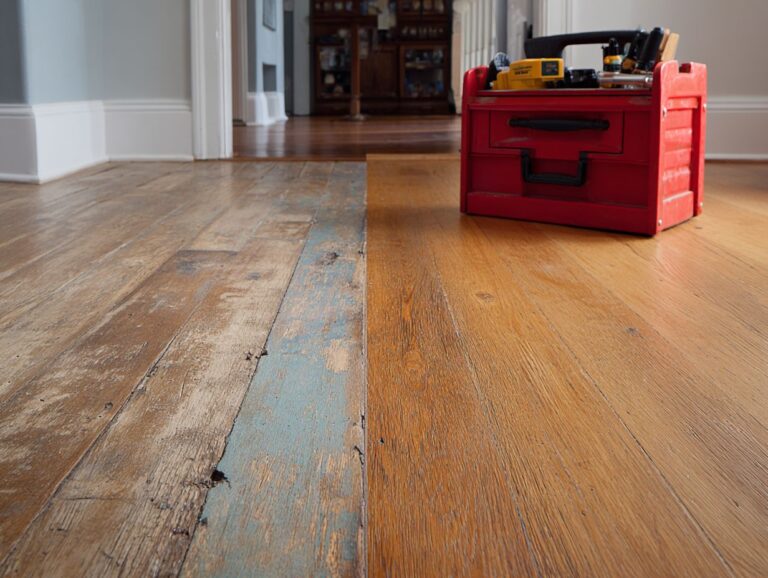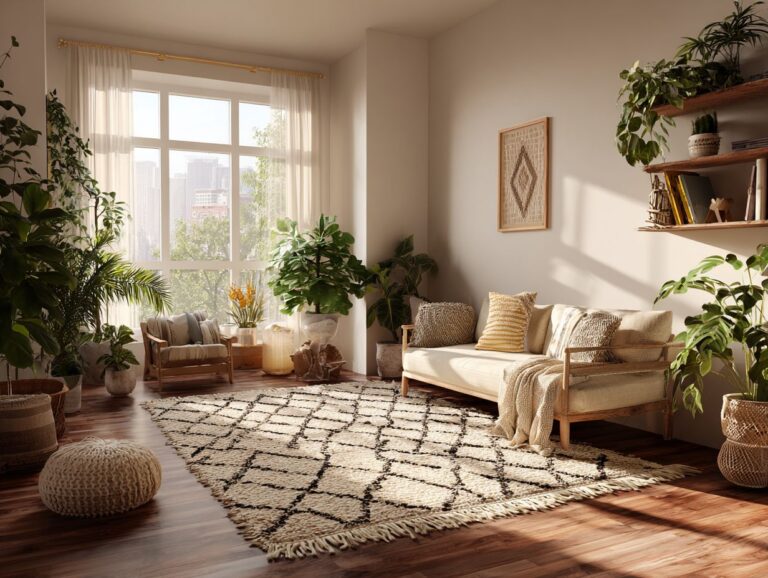Flooring for Extreme Climates – Hot and Cold
Contents
- Introduction to Flooring for Extreme Climates
- Extreme Climate Flooring Statistics
- Hot Climate Flooring Options
- Cold Climate Flooring Options
- Durability and Maintenance Considerations
- Environmental Impact and Sustainability
- Installation Techniques for Extreme Climates
- Frequently Asked Questions
- What types of flooring are best for extreme climates with both hot and cold temperatures?
- Is hardwood flooring a good choice for extreme climates with hot and cold temperatures?
- Can carpet be used in extreme climates with hot and cold temperatures?
- What type of flooring is best for extreme cold temperatures?
- Can I use laminate flooring in an extreme climate with hot and cold temperatures?
- Is it necessary to acclimate flooring before installation in an extreme climate with hot and cold temperatures?
Introduction to Flooring for Extreme Climates
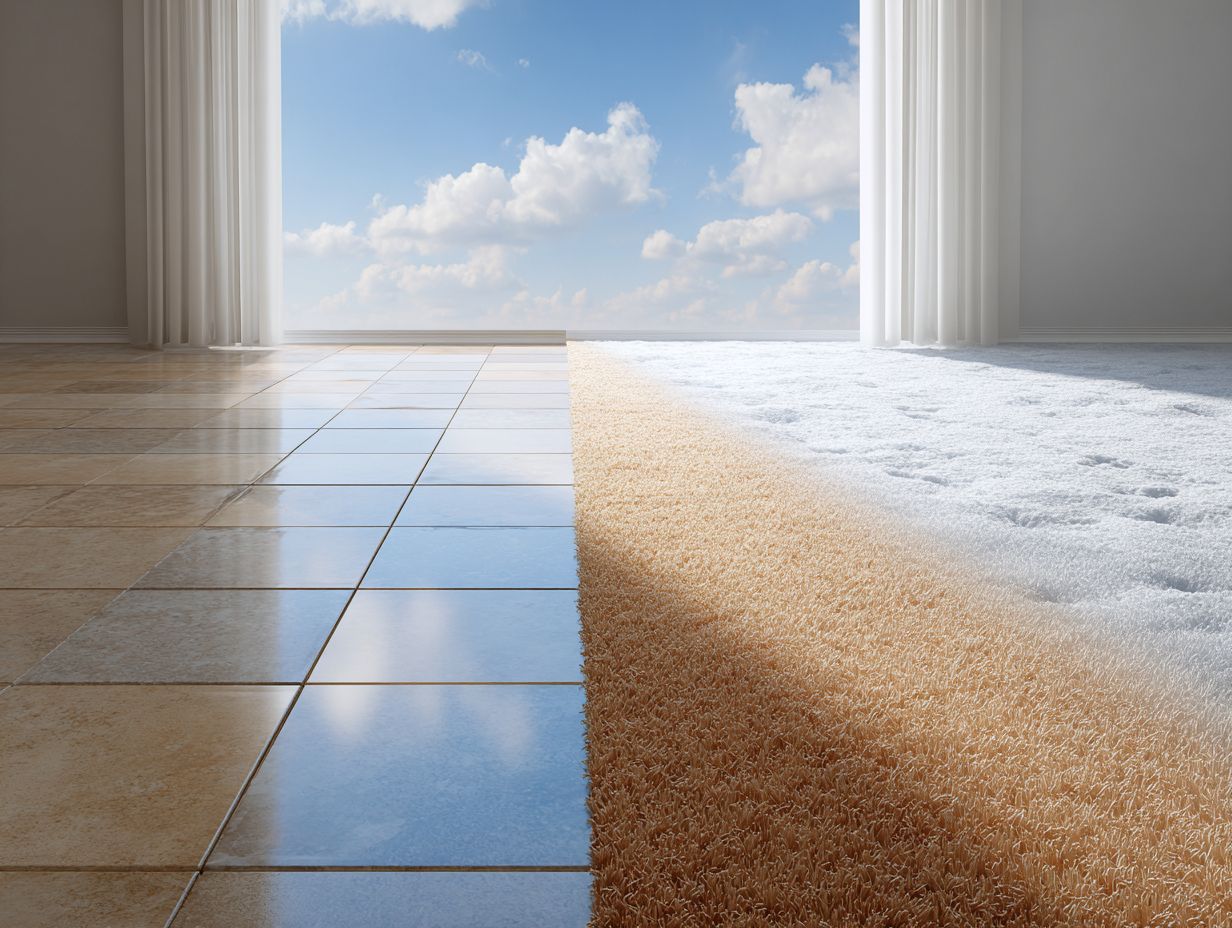
Key Takeaways:
Importance of Choosing the Right Flooring
Selecting the right flooring can reduce maintenance costs by up to 40%, depending on climate conditions and material choices.
In extreme climates, homeowners can save significantly by choosing materials suited for their environment.
For example, Linda in Minnesota opted for luxury vinyl planks, which withstand freezing temperatures and require minimal upkeep, reducing her annual maintenance costs by 30%. Unlike others, Tom in Arizona picked ceramic tiles because they work well in hot weather. They help reduce cooling expenses and do not fade or stain, which means he spends less on getting new ones.
Choosing long-lasting materials suited for the climate helps save money and makes things last longer.
Overview of Extreme Climate Conditions
Extreme weather conditions, like high humidity in hot areas and very cold temperatures, can affect how long flooring lasts and how well it works.
In hot climates, humidity levels can exceed 70%, causing wooden floors to swell and warp. Opt for engineered hardwood or vinyl flooring, as they are engineered to resist moisture.
Conversely, cold climates can drop to minus 20 degreesF, leading to brittle materials like tile cracking. Use carpets or rubber flooring that can provide insulation and flexibility.
Consider applying sealants to protect surfaces from moisture in both scenarios. Regular maintenance, like using dehumidifiers or humidifiers to control moisture, improves durability in harsh conditions.
Extreme Climate Flooring Statistics
Extreme Climate Flooring Statistics
The Extreme Climate Flooring Statistics give a thorough overview of the changing flooring market, with a focus on trends in composite and hardwood flooring, and regional import patterns. This data sheds light on shifting consumer preferences and regional trade patterns in the flooring industry.
Market Growth and Share reveal significant insights. The Composite Flooring Market is set to grow from a $1.5 billion market size in 2024 to $2.8 billion by 2033, driven by its resilience to extreme climate conditions and aesthetic versatility. This market anticipates a 7.5% compound annual growth rate (CAGR) from 2026 to 2033, suggesting strong and sustained demand, likely fueled by advancements in composite materials and increasing consumer preference for durable, low-maintenance options.
- Hardwood Flooring Market Decline: In contrast, hardwood flooring is experiencing challenges, with a 9.8% revenue drop and an 11.2% volume drop in 2022. This decline reflects a shift away from traditional hardwood options, possibly due to their susceptibility to climatic variations and higher maintenance needs. The 2022 hardwood sales share stood at 8.6%, while the volume share was even lower at 4.7%, highlighting a shrinking market presence.
Regional Import Shares show how international trade works in the flooring industry. Notably, China held a 29.0% import share in 2022, while Southeast Asia led with a 43.0% share. These areas are key supply centers, affecting worldwide supply and prices. Southeast Asia is a leading region for flooring imports because it has strong manufacturing abilities and offers competitive prices.
Overall, the Extreme Climate Flooring Statistics Showcase a lively market scene with strong growth potential for composite flooring, in contrast to the decreasing sales of hardwood. The data highlights that the industry is moving towards more sustainable and climate-resistant choices. Regional import patterns significantly influence market trends.
Hot Climate Flooring Options
Choosing strong flooring materials is important for saving energy and keeping indoor spaces comfortable in hot weather (explore more in our 2025 Flooring Trends guide).
Tile Flooring
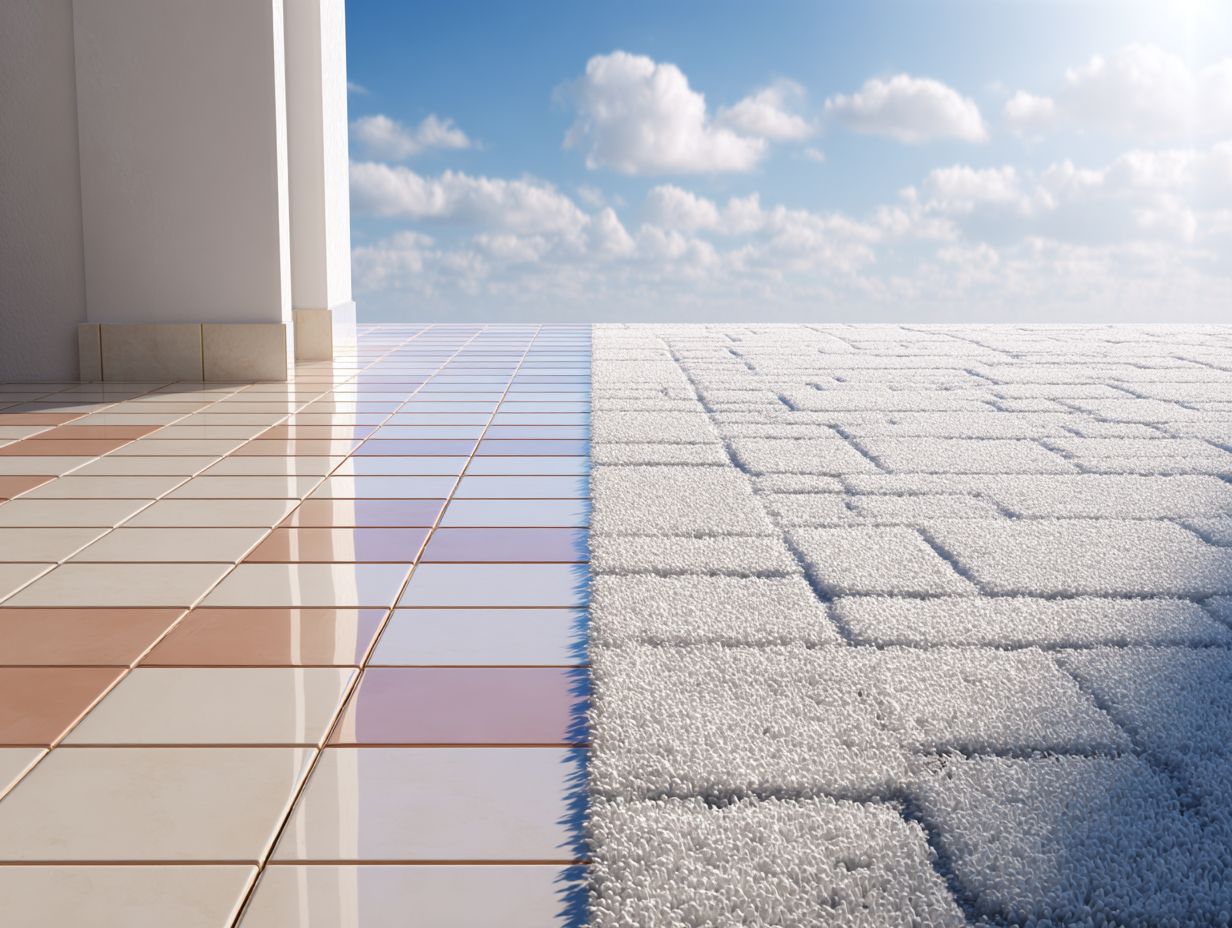
Porcelain tile is a top choice in hot climates, with prices ranging from $2 to $10 per square foot, offering water-resistance and durability.
Its feature of staying cool helps lower indoor heat, making it ideal for summer.
Porcelain tiles require minimal maintenance; simply sweeping and mopping with mild detergent can keep them looking new.
When considering the overall investment, installation costs typically range from $1 to $5 per square foot, depending on your location and the complexity of the layout.
Porcelain tiles are a sensible option for homeowners in warm climates because they are cheap, last a long time, and don’t require much maintenance.
Concrete Flooring
Concrete flooring, with costs averaging $3-$7 per square foot, provides excellent durability and can be treated for insulation against heat.
In hot climates, concrete floors remain cool, helping to lower energy costs. To improve comfort, try using a radiant floor heating system that places heating parts under the concrete.
This method warms the floor in cooler seasons and reduces energy use. Using a concrete sealant can help with moisture resistance-key in humid areas.
Decorative options like stained or polished finishes can make your concrete flooring visually appealing without compromising its low-maintenance advantages.
Engineered Wood
Engineered wood flooring, priced between $3 and $12 per square foot, resists warping and allows for better performance in humid conditions prevalent in hot climates.
This flooring features a layered construction, which includes a top layer of hardwood veneer for aesthetic appeal and multiple layers of plywood underneath for strength. This unique blend reduces size fluctuations, making it ideal for varying temperatures.
Many engineered wood options come with a moisture-resistant finish, further enhancing durability. Brands like Shaw and Mohawk offer engineered wood specifically designed for high humidity, ensuring longevity in your home.
For installation, consider using moisture barriers to maximize performance, creating a reliable solution for hot climates.
Luxury Vinyl Plank (LVP)
Luxury Vinyl Plank (LVP) costs between $2 and $5 per square foot, offering a blend of water-resistance and design versatility ideal for hot climates.
In hot regions, people choose LVP because it handles water well, which is helpful for managing moisture and spills-situations where regular hardwood might not work effectively.
LVP’s ease of installation allows for simple DIY projects, often completed without professional help. Compared to ceramic tiles, which can be cold and hard underfoot, LVP offers a warmer feel while mimicking the look of natural materials.
With various styles available, from wood looks to trendy stone patterns, homeowners can effortlessly find a design that complements their decor.
Cold Climate Flooring Options
Choosing flooring for cold areas should emphasize keeping heat in and providing warmth to stay comfortable inside during low temperatures.
Carpet Flooring
Carpet flooring is a popular choice in cold climates, costing $2 to $5 per square foot, known for its insulation properties that help retain heat.
This insulation increases comfort when walking and helps lower energy bills by keeping homes warmer during winter.
When selecting carpet for cold areas, opt for materials like wool or nylon, which provide better heat retention. Consider a thicker pile for extra warmth and comfort.
Brands like Mohawk and Shaw offer high-quality options designed specifically for colder climates. Putting a thick, soft pad under the carpet can make it warmer and more comfortable, which is especially helpful in cold months.
Hardwood Flooring
Hardwood flooring can cost between $5 and $15 per square foot, but its durability and aesthetic appeal make it a sought-after option in cold climates.
Hardwood is susceptible to shrinkage in extreme temperatures, which can lead to gaps between planks. To address this, getting used to the conditions is important.
Before installation, allow your hardwood to sit in the room where it will be installed for at least 48 hours. This helps the wood adjust to the indoor humidity levels.
Consider using a humidifier during winter months to maintain a stable environment, preventing excessive contraction and ensuring the flooring remains intact and visually appealing.
Radiant Floor Heating Systems
Radiant floor heating systems, which can add $6-$20 per square foot to installation, provide warmth directly to the floor, enhancing comfort during cold months.
These systems work well with different types of flooring. For tile or stone floors, which transfer heat effectively, the warmth is felt quickly.
Carpeting feels comfortable but can reduce effectiveness slightly; using thinner carpets or rugs can help reduce this effect. During installation, make sure there is enough insulation under the setup to stop heat from escaping.
Though it costs more at first, radiant heating can save 15-30% on energy compared to regular heating, which makes it a good investment over time.
Laminate Flooring
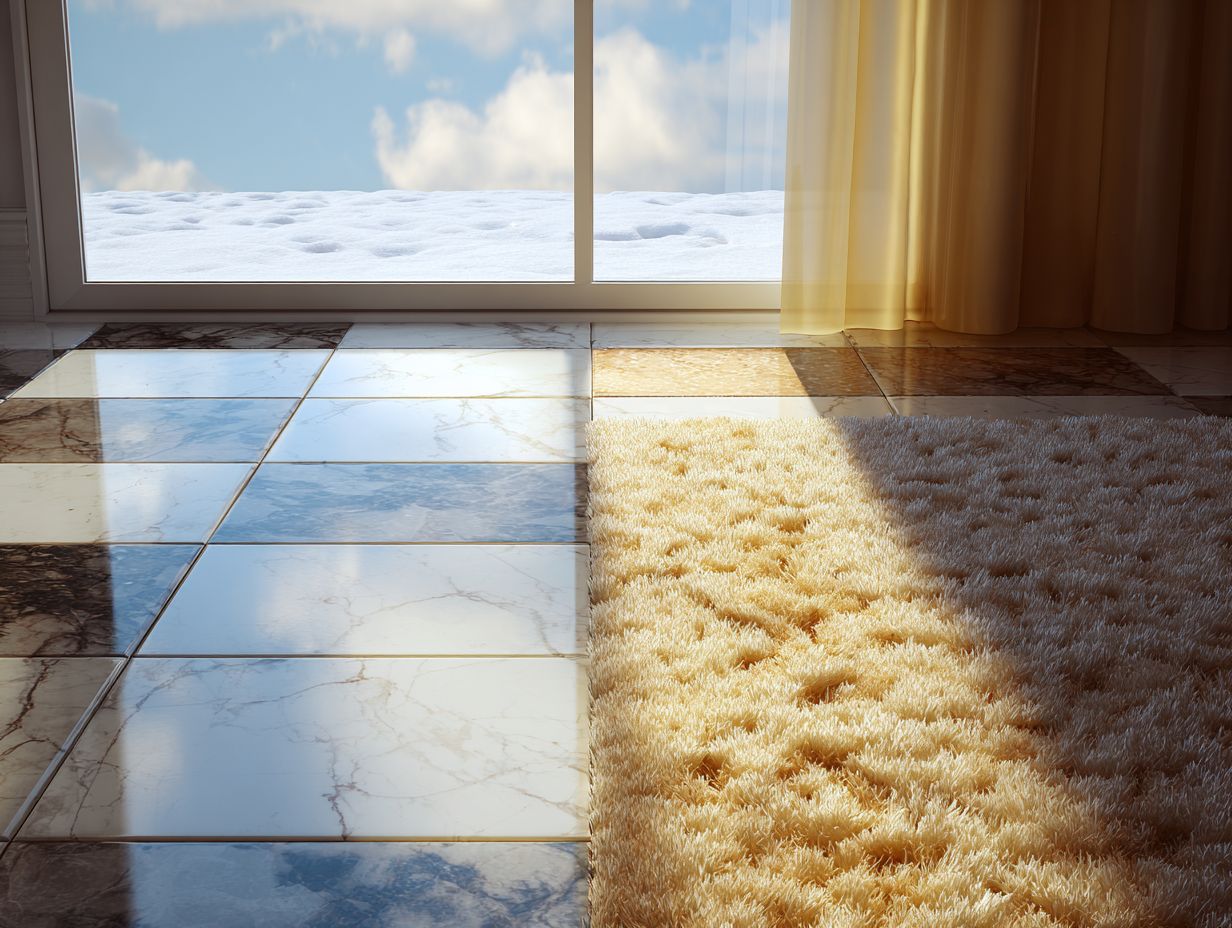
Laminate flooring, ranging from $1 to $5 per square foot, offers a moisture-resistant option that performs well in cold climates when properly installed.
To maximize its benefits in cold environments, choose brands like Pergo, Quick-Step, or Mohawk, known for their durable moisture-resistant options.
Proper installation is important. Make sure to put a vapor barrier under the flooring to stop moisture from coming up through the subfloor. Consider using underlayment designed for insulation to maintain warmth.
A properly set laminate floor retains heat and reduces heating costs, providing a budget-friendly choice for homeowners looking for efficiency and comfort.
Durability and Maintenance Considerations
Picking flooring that is durable and simple to maintain is important, especially since temperature fluctuations can impact the material’s durability.
Impact of Temperature Fluctuations
Temperature fluctuations can cause flooring materials to expand or contract, leading to issues like shrinkage and cracks, especially in hardwoods.
For instance, oak and maple are particularly sensitive, often resulting in gaps or warping under extreme temperatures.
To mitigate these risks, consider installing a humidifier during dry seasons to maintain optimal humidity levels around 30-50%.
Acclimate hardwood planks in your home environment before installation; this can take about 72 hours.
For tile or laminate, use suitable underlayment to manage temperature changes. Regularly check the environment and allow for expansion gaps to prevent damage during seasonal changes.
Moisture Resistance
Choosing moisture-resistant flooring can significantly extend the life of your investment, particularly in climates with high humidity or snow melt.
Opt for materials like vinyl plank, tile, or laminate with a high water resistance rating. Luxury vinyl plank is completely waterproof and can handle spills and high moisture, which makes it ideal for kitchens and bathrooms.
Tiles offer excellent durability as they are non-porous; a porcelain option is often favored for its resilience against moisture. Consider moisture barriers during installation to further protect against water damage.
These choices extend your flooring’s lifespan and help you save money on repairs over time.
Environmental Impact and Sustainability
As environmental concerns grow, choosing eco-friendly flooring options has become important for many homeowners, providing sustainability without lowering quality. For an extensive analysis of sustainable flooring, our deep dive into recycled and reclaimed flooring options offers valuable insights into eco-friendly choices.
Eco-Friendly Flooring Materials
Materials like bamboo and cork provide eco-friendly flooring options that are renewable, durable, and often more affordable than traditional wood.
Bamboo costs between $3 and $8 per square foot. It grows quickly and is strong, which makes it a great option for busy areas.
Cork, priced between $3 and $6, offers natural insulation and sound absorption, ideal for living spaces.
Brands such as Cali Bamboo for bamboo flooring and Wicanders or Cork Forest for cork options provide quality products. Both materials require minimal maintenance, appealing to eco-conscious homeowners.
Consider installation costs as well, which typically add another $2 to $5 per square foot, ensuring a wise investment in sustainability.
Energy Efficiency in Flooring Choices
Selecting flooring with high insulation properties can lower energy costs by 10-15%, particularly in extreme climates where heating and cooling are essential.
Materials like bamboo and cork are excellent choices for energy efficiency. Bamboo is a kind of grass, not wood, which makes it a good choice for the environment because it naturally keeps heat in.
Cork, with its unique cellular structure, acts as a barrier against temperature changes. For added efficiency, consider adding radiant floor heating beneath tile or laminate; this setup can significantly reduce energy use compared to forced air systems.
By choosing these materials wisely, homeowners can reduce energy costs and help create a more environmentally-friendly home.
Installation Techniques for Extreme Climates
Correct installation methods are important to make sure flooring lasts a long time, particularly in areas with big changes in temperature.
Preparation for Installation
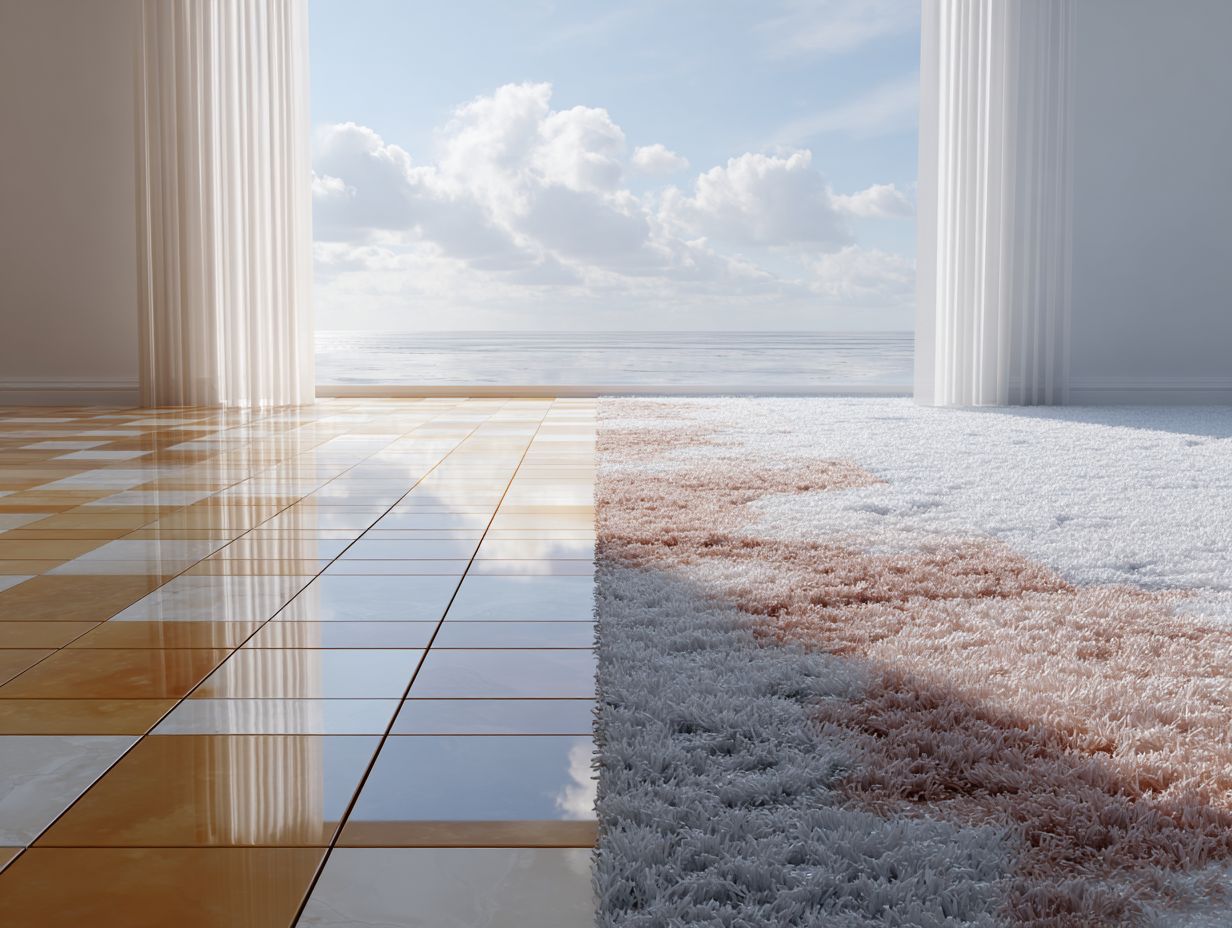
Preparing the subfloor by performing moisture tests and ensuring a level surface can prevent many common flooring issues.
- Start by testing for moisture using a moisture meter; a reading above 12% indicates potential problems.
- Next, use a leveling compound for any dips or irregularities, ensuring a smooth surface.
- Clear the area of debris and dust to promote proper adhesion.
- Gather essential tools such as a trowel, utility knife, and measuring tape.
- Allow the subfloor to acclimate by maintaining appropriate temperature and humidity levels for at least 48 hours before installation.
These steps create a solid foundation for your new flooring.
Choosing the Right Underlayment
Selecting the right underlayment can improve sound insulation and thermal comfort, impacting the overall performance of the flooring.
There are different kinds of underlayment to think about.
- Foam underlayment is budget-friendly and great for vinyl or laminate flooring, but offers limited sound absorption.
- Cork underlayment offers great soundproofing and heat insulation for hardwood floors, but it may cost more.
- Rubber underlayment excels in sound absorption, suitable for various flooring types, but comes at a higher cost.
For humid climates, opt for moisture-resistant options like a polyethylene foam layer to protect against mold. Choose based on your flooring type and local conditions to maximize benefits.
Summary of Key Points
Flooring options should match the weather to last longer, feel good, and save money over time.
For instance, in humid areas, consider moisture-resistant options like vinyl or tile that won’t warp. In colder climates, hardwood or carpets provide warmth and insulation, which can lower heating costs.
Checking your area’s weather is important: in coastal areas, choose materials that can withstand saltwater damage.
Using tools like the Moisture Meter can check humidity levels in your home before making a decision, ensuring your flooring lasts and keeps your indoor space comfortable.
Flooring Trends for Harsh Weather Conditions
Recent developments in flooring technology focus on better performance and eco-friendliness, addressing issues from severe weather.
Innovations in eco-friendly flooring materials include bamboo and cork, both of which provide excellent durability and are renewable resources.
Manufacturers are trying out materials that can change with the temperature, like phase-change polymers. Tools like Life Cycle Assessment (LCA) software help producers evaluate the environmental impact of their flooring options, ensuring they meet sustainability standards.
By investing in these technologies, consumers can enjoy aesthetically pleasing, durable, and environmentally responsible flooring solutions suitable for diverse climates.
Frequently Asked Questions
What types of flooring are best for extreme climates with both hot and cold temperatures?
Some of the best options for flooring in extreme climates with both hot and cold temperatures include tile, concrete, and vinyl. These materials are durable and can withstand the fluctuations in temperature without warping or cracking.
Is hardwood flooring a good choice for extreme climates with hot and cold temperatures?
Hardwood flooring is not recommended for extreme climates with hot and cold temperatures. The wood can expand and contract with temperature changes, leading to warping and cracking. It is better to choose a more stable and durable material.
Can carpet be used in extreme climates with hot and cold temperatures?
Carpet can be used in extreme climates with hot and cold temperatures, but it may not be the most practical choice. Carpet can trap heat and moisture, which can lead to mold and mildew growth. Consider using carpet in low-traffic areas or opt for a moisture-resistant carpet option.
What type of flooring is best for extreme cold temperatures?
In extreme cold temperatures, materials that can withstand freezing temperatures, such as ceramic tile, natural stone, and vinyl, are ideal. These materials are less likely to crack or warp in the cold and can also be paired with in-floor heating for added warmth.
Can I use laminate flooring in an extreme climate with hot and cold temperatures?
Laminate flooring is not recommended for extreme climates with hot and cold temperatures. The material is susceptible to expanding and contracting with temperature changes, which can result in gaps or buckling. Consider other materials such as tile or vinyl for better durability.
Is it necessary to acclimate flooring before installation in an extreme climate with hot and cold temperatures?
In extreme climates with hot and cold temperatures, it is essential to acclimate flooring before installation. This helps the flooring get used to the temperature and humidity of the area, lowering the chance of it bending or lifting after being put in.
